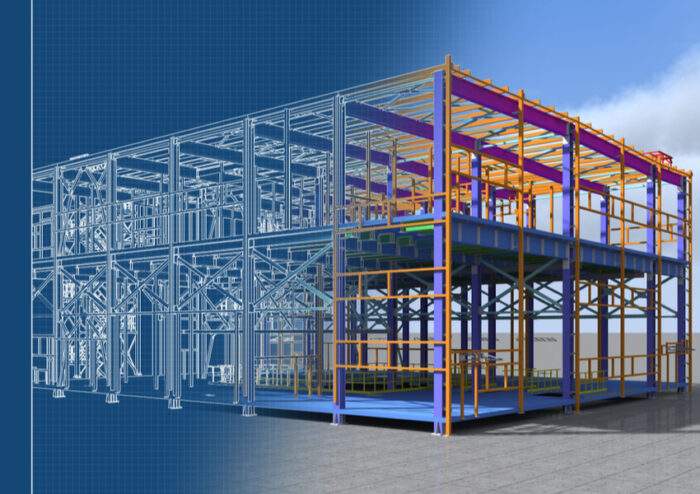How are BIM Modeling services advantageous for Infrastructure Projects?

The rapidly progressing world of construction and infrastructure development witnesses BIM as a transformative force, revolutionizing the way projects are conceived, managed, and executed. 3D BIM Modeling services are not just a modeling tool but a holistic approach to project management that promotes collaboration, improves efficiency, minimizes discrepancies, and ensures adherence to the design intent. BIM is altering the landscape of infrastructure projects and driving innovation in the industry.
Revit BIM modeling provides a detailed, graphical, robust, and intelligent three-dimensional project model with elaborative insights about the connection between the design and other project phases. It is a vital aspect of construction and should be analyzed and implemented during the process. BIM provides a wide range of functions and applications that entail detailed information about the management practices that must be implemented throughout the project lifecycle.
What is Building Information Modeling (BIM)?
Building Information Modeling is an integrated 3D model-based approach that manages project data and provides significant tools and insights to the AEC industry for executing an efficient building design. The days of sharing documents manually via drawing sets and files are diminishing with the evolution of technology. All project data and documentation are communicated electronically using BIM with access for all involved team members.
The AEC firms employ BIM for infrastructure projects to support a combined strategy across the building facility, facilitating project management. BIM Modeling services develop 3D renders of each building asset and create a digital portfolio with every design aspect, serving as a comprehensive construction guide.
Conventional Challenges of Infrastructure Development
Traditionally, the development of bridges and roads comes with various challenges. Such projects involve complex geometries, intricate design barriers, multiple stakeholders, and difficult coordination between various teams. Some of the commonly faced challenges in infrastructure projects include:
Data discrepancies
While dealing with such massive-scale projects, the project details are scattered across different documents and software applications. This makes it a tedious task to maintain consistency and accuracy throughout project completion.
Lack of Coordination
Infrastructure projects like building roads and bridges witness the involvement of multiple stakeholders including architects, designers, engineers, and contractors. The lack of coordination among the involved team members leads to misunderstandings and expensive mistakes on site.
Finite Team Collaboration
The lack of centralized data and communication channels might lead to limited collaboration between the involved parties of the project. The project team cannot communicate and analyze the various project aspects explicitly.
Budget Overruns and Delays
The inherent inefficiencies in traditional project management are a fundamental reason behind project delays and budget overruns. The work quality and inefficacy impact the project budget and decided work schedules.
Benefits of BIM Modeling Services
BIM Modeling services are transforming the infrastructure sector by overcoming the above-listed challenges and providing the following benefits to the industry and the project. Here’s how BIM is revolutionizing the way of infrastructure development:
Improves Collaboration
BIM Modeling services enhance collaboration among project stakeholders throughout the different stages of a building including designing, planning, construction, and maintenance. A digital replica of the project is generated using BIM that is commonly accessible for all parties to work on, leading to an inclusive and cohesive process.
The inclusivity ensures that all team members have access to the same information, reducing miscommunications and inaccuracies. The real-time sharing of data, opinions, and reviews enhances communication within the team and enables early error identification, resulting in an efficient design outcome.
Enable Better Decision Making
BIM provides a digital representation of the built form or infrastructure that helps in evaluating different design options and situations, facilitating a better decision-making process. The architects can identify potential issues, evaluate the performance of the building, and make informed decisions accordingly. BIM modeling assists in identifying issues not apparent during the design phase such as thermal performance, structural deficiencies, and energy efficiency. The architects can assess different building layouts and materials to ascertain the most efficient and cost-effective design. Contractors can plan the construction process and identify potential conflicts among various trades.
Enhanced Efficiency
Revit BIM Modeling significantly boosts design efficiency by automating tasks otherwise executed manually. Material lists, detailed schedules, and cost estimates can be generated automatically with BIM. The process saves time, enhances coordination among different times, and reduces project expenses. The modeling services help the project stakeholders in identifying the roadblocks, streamline the construction process, and complete the project within the deadlines.
Enhance Sustainability
Building Information Modeling enhances the sustainability of a project by enabling an energy-efficient design. BIM software is used to analyze and optimize a building’s energy performance, minimizing energy consumption wherever possible. The energy-saving steps include building positioning, integrating energy-efficient equipment, and wisely utilizing natural light. Along with integrating these methods for sustainability, opting for appropriate materials is also a viable factor.
BIM software helps in differentiating materials with minimum and maximum environmental effects by analyzing their carbon footprints, potential for recycling, and embodied energy. The right material selection results in a more sustainable and efficient design outcome.
Centralized Data Source
BIM serves as a repository for all project information, including layouts, cost estimates, construction schedules, and maintenance data. This centralized data source ensures that all stakeholders work from a common data source, minimizing errors and discrepancies. The stakeholders can analyze the project data concurrently and make required amendments to the design. It streamlines the workflows, aligns the construction process, and provides better work quality.
Conclusion
Building Information Modeling is a game-changer in the architecture, construction, and infrastructure industry. It evolves the way roads, bridges, and other infrastructure projects are constructed by enhancing design accuracy, centralizing data, improving collaboration, and optimizing project management. Revit BIM modeling is considered the finest methodology to undertake infrastructure projects, ensuring utmost accuracy and efficiency. It is gaining momentum in the industry as it imparts a more precise asset management and maintenance process throughout the project lifecycle. As the technology continues to evolve, BIM will function at the forefront of the infrastructure sector, shaping the future of the AEC industry.







